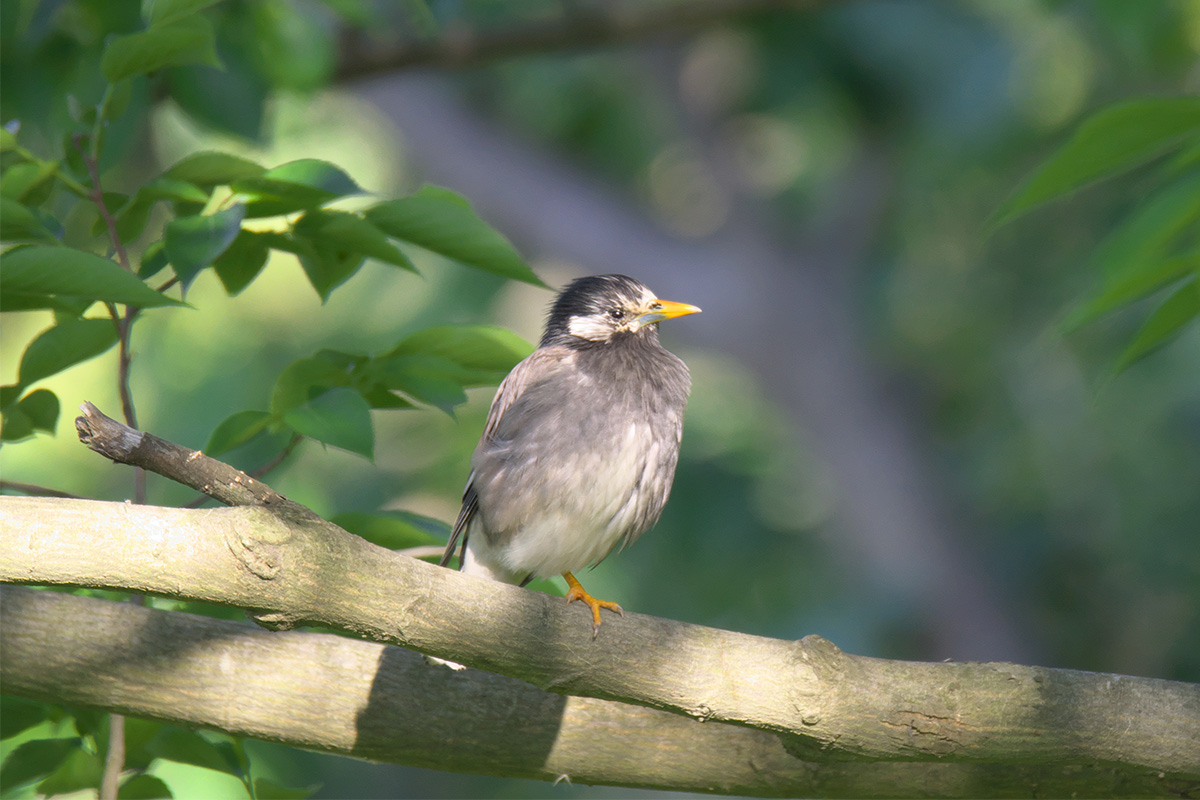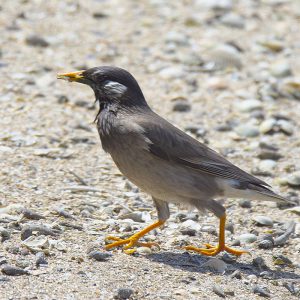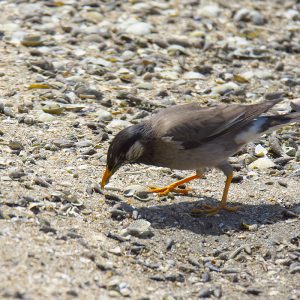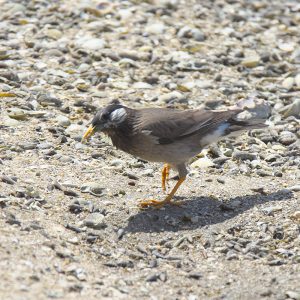むなかたが集まる
電子データベース
電子データベース
ムクドリ

| 種目 | ムクドリ (椋鳥) | 分類 |
スズメ目 ムクドリ科 ムクドリ属 |
学名 | Spodiopsar cineraceus | 英名 | White-cheeked Starling |
|---|---|---|---|---|---|---|---|
|
ムクドリ (椋鳥) |
スズメ目 ムクドリ科 ムクドリ属 |
Spodiopsar cineraceus | White-cheeked Starling |
宗像市でみられる場所・時期
宗像では留鳥で,市内全域の農耕地,市街地などで一年中観察できる。
特徴
全長24㎝。キジバトより小さい。雌雄ほぼ同色である。
雄は,頭部から胸が黒褐色で雌よりも黒みが強く,特に脇は暗灰色で背や胸の褐色とのコントラストがはっきりする傾向がある。額から頰は白く,黒褐色の縦斑が入る。個体差があり,その模様は様々である。背以下の体上面,胸以下の体下面は灰褐色で腰,尻から下尾筒は白い。尾はやや短く,尾先端の内弁に白斑がある。嘴と脚は黄褐色で,嘴の先端はl黒い。夏羽では下嘴基部は青みが強くなる。虹彩は暗褐色である。
雌は,頭部が雄よりも褐色みが強い。
習性
平地から山地の市街地や農耕地,芝地,河原,果樹園などで生息する。一年を通じて群れで行動し,草丈の低い場所を歩きながら,昆虫類やミミズ,節足動物などのほか,木の実もよく食べる。
「キュルキュル」,「ギュルギュル」,「ジーッ チェッ チェッ」と地鳴きする。
分布
留鳥または漂鳥で,全国で観察されている,南西諸島では冬鳥となる。
日本列島,千島列島,カラフト南部,アムール川流域,沿海州,中国東北部,朝鮮半島,中国大陸に分布する。
その他
もともとは平地の林や農耕地に住み一部が市街地で暮らす鳥であったが,都市化が進むに連れて安全で暖かい年で多く見られるようになった。大集団でねぐらを形成することから,都市部の街路樹にねぐらを作った場合など,鳴き声による騒音や憤慨が国内各地で伝えられている。なお,冬場に集まることの方が多い。
 はじめに
はじめに お問い合わせ
お問い合わせ

